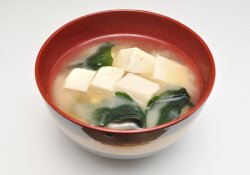Castella Traditional Sponge Cake Recipes and curiosities
On this page you will learn the recipe and some information about the Japanese dish Castella Traditional Sponge Cake Also known as kasutera.
Table of Content - About - Origin - Information - Ingredients - Preparation - Related
All about kasutera
Castella is a type of traditional Japanese cake that has a soft texture and soft taste. It is made with simple ingredients such as flour, sugar, eggs and honey, but its preparation requires a lot of skill and patience.
The castella mass is made only with egg gems, which results in a bright yellow color and a rich taste. The clear ones are beaten separately and gently added to the mass to ensure that the cake is light and smooth.
After baking, the castella is cut into thick slices and served as dessert or snack. It can be consumed alone, but it is also common to accompany it with green tea or matcha.
One of the most striking features of the castella is its rectangular shape and the diagonal lines on its surface, which are made with the help of a wooden chest during the cooking process.
Although it is a traditional Japanese dish, castella has become popular in other countries, such as Taiwan and South Korea.In addition, there are variations of the original recipe, such as chocolate castella or cream filled castella.
If you are a fan of lightweight and delicate sweets, castella is a great option to experience Japanese cuisine. With its soft texture and soft taste, this cake conquers tastes around the world and is a true symbol of Japanese cuisine.

Origin and history of Bolo de esponja tradicional de Castella
The traditional castella dish is a sponge cake originating in Portugal, which was introduced to Japan during the 16th century by Portuguese missionaries. The name "castella" is an adaptation of the Portuguese word "bread of Castilla", referring to the region of Castilla, Spain. This cake is made with simple ingredients, such as flour, sugar, eggs and honey, and is known for its soft texture and soft taste. Over the years, castella has become a popular dish in Japan, being sold in specialized stores and served on special occasions. Its popularity has also spread to other Asian countries, such as Taiwan and South Korea. Today, there are several variations of castella, including flavors such as green tea and chocolate, but the basic recipe remains true to its Portuguese origins.About the recipe
- Name of the plate: Castella Traditional Sponge Cake
- Name of the dish in English: Traditional castella sponge cake
- Name of the plate in Japanese: カステラ
- Name of the Romanian dish: kasutera
Information about preparation
- Time to prepare: 25 minutes
- Time of Cooking: 55 minutes
- Difficulty: MEDIUM
- It suits: 4-5 people
- Occasions: Dishes and snacks
Ingredients – Ingredients
Check out the necessary and optional ingredients Castella Traditional Sponge CakeIt makes sense to improvise
- 4 medium-sized eggs at room temperature
- 110 g of sugar
- 2-3 tablespoons of honey
- 100g of strong flour
- 1 tablespoon of baking powder
- 1 cup of vanilla extract
- 1 tablespoon vegetable oil
- 1 pinch of salt
- 1 cup of water
- 1 tablespoon of rum (optional)
Watch a video of the recipe:
Recipes - How to Prepare
Now that you know the ingredients to make the recipe Castella Traditional Sponge Cake. Follow the instructions below in the preparation mode or step by step.
Preparation:
Step 1: Prepare the egg mixture
- In a metal bowl, break 4 eggs and add 110g of sugar.
- Hit with a high-speed electric beater for 6 minutes on double boiling water.
- The egg mixture will increase about 4 times in volume.
Step 2: Bite the egg mixture
- Add 2-3 tablespoons of honey to the egg mixture and beat at average speed for about 30 seconds.
- Peneire 33g of flour in the mixture and bat.
- Slightly lower the average speed and add another 33g of flour.
- Add the last 34g of flour and bat until mixed for about 1 minute.
- Do not mix too much to prevent the cake from falling or flat.
Step 3: Pull the pasta into a bowl
- You will be able to find out what you are looking for.
- Use a spit to draw a zig-zag line to remove large air bubbles from the bulk.
- This will ensure a uniform texture on the final cake.
Step 4: Stir the cake
- Stir in a pre-heated oven at 180 °C for 10 to 15 minutes until the top gets a rich brown color.
- Quickly cover with aluminum paper and lower the temperature to 170 °C.
- Continue cooking for about 55 minutes.
- Test the sponge, if it comes out clean, the cake is ready.
Step 5: Refrigerate the cake
- Remove the cake from the can and immediately cover the surface with plastic film.
- Turn the cake on a flat plate and, while it’s still hot, put it in a plastic bag.
- Let it rest for 12 hours so that the cake stays moist.
Step 6: Serve and enjoy
- Before serving, cut the sides of the cake.
- Serve with tea or coffee and a tablespoon of Chantilly cream for a more decadent experience.
Tips:
- The cake can be stored in the refrigerator for up to 5 days or frozen for up to a month, wrapped in plastic film.




